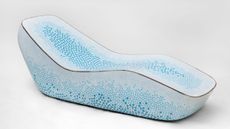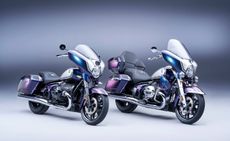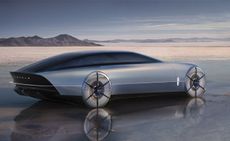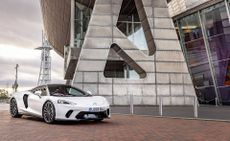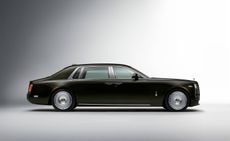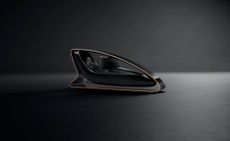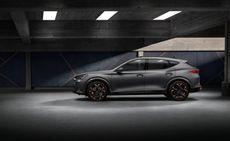Celebrating the genius of the late Robert Opron
The French auto designer and engineer Robert Opron died on 29 March 2021, at the age of 89
- (opens in new tab)
- (opens in new tab)
- (opens in new tab)
- Sign up to our newsletter Newsletter
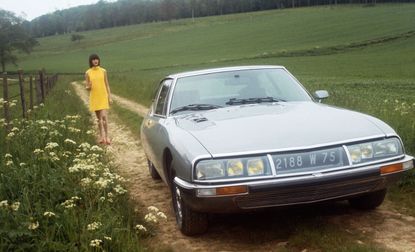
Perhaps more than any other designer, Robert Opron’s work came to embody the qualities of idiosyncrasy and individuality in French car design, helping set the output of the country’s factories at odds with convention. In particular, his long association with Citroën took the company’s engineering-infused brilliance to another level. One of his first roles on joining the company was re-styling the legendary DS, designed by Citroën’s head designer Flaminio Bertoni with André Lefebvre and originally launched in 1955. After the Italian designer died in 1964, Opron continued his legacy, streamlining the DS’s appearance with the Series 3 car in 1967. Regularly voted as one of the boldest and most influential car designs of all time, the redesign of the DS developed Bertoni’s baroque forms and kept them feeling futuristic and advanced.

1973 Citroën DS21, one of the last examples to be made
Opron was born in 1932 and grew up in Africa. From 1952, he studied at Paris’s École des Beaux-Arts, where he took courses in painting, sculpture and architecture, the latter under the tutelage of the great modernist innovator Auguste Perret (who had given Le Corbusier his first architectural job some three decades before). Following his studies, Opron worked first in aeronautical design, then for the French car maker Simca. His designs included the 1958 Simca Fulgur concept, a flying saucer-style bubble car intended to preview the roads of the 21st century. Its aviation influences were all too clear, from the passenger canopy to the fighter jet-like rear spoiler.
After Simca shuttered its design department, Opron spent a couple of years working on consumer goods before joining Citroën in 1962. He took over the design department after Bertoni’s death and found himself at the helm of a company willing to take stylistic risks despite its wavering finances. In 1974, the company went bankrupt, partly due to its ill-fated acquisition of Italian sports car maker Maserati in 1968. The union was meant to enhance Maserati’s technical ability and propel Citroën into the luxury realm. The car that resulted, the majestic Citroën SM of 1970, was Opron’s masterpiece.


Above, 1958 Simca Fulgur Concept (Image from ‘Robert Opron, L’Automobile Et L’Art’ by Peter Pijlman, Sagitta Productions, Netherlands, 2002). Below, The 1970 Citroën SM was Opron's masterpiece. Introduced in 1970, it was the ultimate hi-tech grand tourer
The SM remains quite unlike any luxury car ever built. A large two-door four-seater, it had its origins in a sporting variant of the DS that was prototyped in the early 60s but never produced. Opron put everything into the SM, from the fully glazed front end, through to the tapering rear with its faired-in wheels and large tailgate. The SM was striking and stylish, and although it shared an engine with its Maserati counterparts, it was a fast grand tourer, rather than a sports car. Opron’s design dovetailed perfectly with Citroën’s technical innovations, which evolved from the DS and included the company’s complex hydro-pneumatic suspension and self-centering steering that felt impossibly light at low speeds and firmed up once you got underway.

Two Coachbuilt Citroen SM Presidentials were built by Chapron for President Georges Pompidou in 1971 - they were first used for Queen Elizabeth's state visit to France in 1972
The 1974 bankruptcy resulted in Citroën being merged with its rival Peugeot to form PSA, Peugeot Société Anonyme. The massive factory at Quai André-Citroën was closed after nearly 60 years of operation and the last of the 13,000 SMs built had to be assembled elsewhere, as did the final year of DS production. Ironically, the SM aside, Opron’s designs had proved extremely successful. In particular, his replacement for the DS, the Citroën CX, was voted European Car of the Year in 1975. The CX was a worthy replacement for the DS, with space-age looks inside and out and the same suspension and steering tech as the SM. 1.2 million CXs were built and it remained in production until 1991, advertised by Grace Jones, adapted as a limousine by heads of state, stretched to a six-wheeler, transformed into a convertible and even favoured by camera operators who loved the car’s smooth ride. Stylistically, it fused the sleek fuselage of the SM with the neat shape of the earlier, smaller Citroën GS, another masterful Opron design that was also a big seller, with over 2m made.

An early example of the first generation Citroën CX

Citroën CX camera car, developed by the BBC

The smaller Citroën GS preceded the CX model
The 1975 merger left Opron without a job, so he moved to head up design at Renault, where his designs included the hugely popular Renault 9 and 11 and the idiosyncratic Renault Fuego sports coupé of 1980. Opron is one of a select number of car designers who brought an architectural quality to their work, eschewing the clichéd perception of automotive beauty in favour of a more rational approach, shaped by aerodynamics and the requirements of the passengers. Opron’s interiors often drew parallels with contemporary furniture, and though his work was rarely intended to be ‘luxurious’ in the contemporary sense, it had an individuality that set it apart from the pack.

The 1982 Renault Fuego Turbo, show here as a USA model
Without Robert Opron, and the DS and SM in particular, it seems unlikely that Citroën would have undertaken to create the DS sub-brand in 2009. DS Automobiles is now a standalone company with a mission to bring Gallic luxury to electric vehicles, together with smooth riding, stylish designs. With Peugeot and Citroën both working hard at revitalising their image, there’s hope once more for design that is both far-sighted and popular. Even so, Opron’s genius is hard to translate into the modern era, thanks to tighter margins, a demanding and varied global marketplaces, and far less tolerance for deviation. Here’s hoping his legacy survives into the electric age.
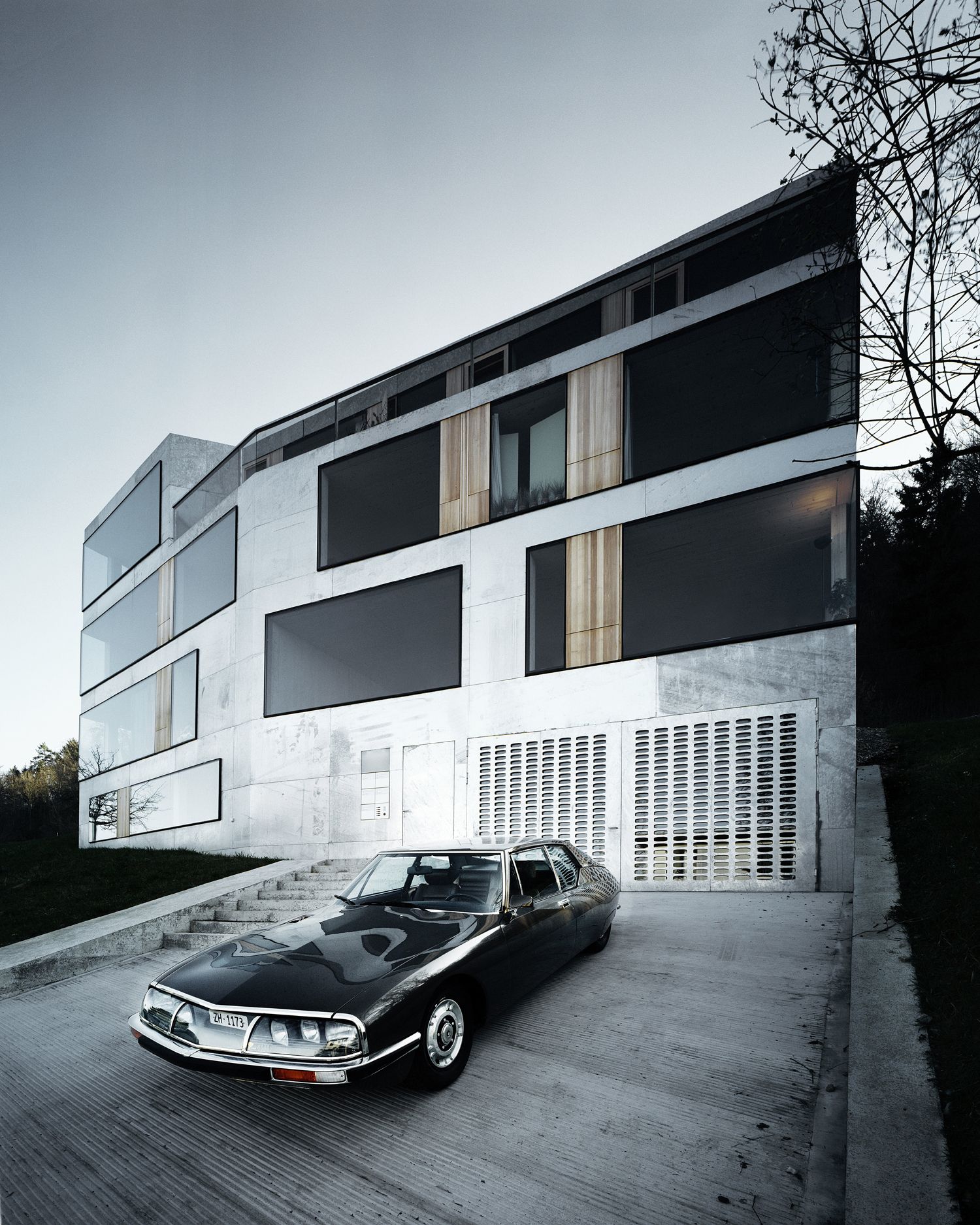
Citroën SM photographed by Valentin Jeck outside the Architect's and Artist's house at the foot of the Üetliberg by AFGH Architekten, published in Wallpaper* 080, July/August 2005
Jonathan Bell has written for Wallpaper* magazine since 1999, covering everything from architecture and transport design to books, tech and graphic design. He is now the magazine’s Transport and Technology Editor. Jonathan has written and edited 15 books, including Concept Car Design, 21st Century House, and The New Modern House. He is also the host of Wallpaper’s first podcast.
-
 Men’s engagement rings for modern grooms
Men’s engagement rings for modern groomsMen’s engagement rings, whether classic or colourful, make for sentimental tokens
By Hannah Silver • Published
-
 Longchamp unites with D’heygere on a playful collection made to ‘transform the everyday’
Longchamp unites with D’heygere on a playful collection made to ‘transform the everyday’Inspired by Longchamp’s foldaway ‘Le Pliage’ bag, this collaboration with Paris-based jewellery and accessories designer Stéphanie D’heygere sees pieces that ‘transform and adapt’ to their wearer
By Jack Moss • Published
-
 Last chance to see: Marc Newson’s all-blue designs in Athens
Last chance to see: Marc Newson’s all-blue designs in AthensGagosian gallery Athens presents new blue furniture and objects by Marc Newson
By Rosa Bertoli • Published
-
 Peugeot’s sparky 308 gets hybrid power and handsome lines
Peugeot’s sparky 308 gets hybrid power and handsome linesThe Peugeot 308 proves that mass-market design needn’t be dull, blending hybrid power with sharp lines and excellent detailing
By Jonathan Bell • Last updated
-
 BMW Motorrad brings out the big guns for its newest cruisers
BMW Motorrad brings out the big guns for its newest cruisersBMW Motorrad R 18 Bagger and Transcontinental set the tone for high-voltage cruising with a brand collaboration with speaker specialist Marshall
By George Chapman • Last updated
-
 Dacia’s new Manifesto concept is a true outdoor utility vehicle
Dacia’s new Manifesto concept is a true outdoor utility vehicleUtilitarian auto brand Dacia sets a bold new agenda with its Manifesto, a concept car pitched at the active outdoor market
By Jonathan Bell • Last updated
-
 The sun sets on traditional supercars at California’s Monterey Car Week
The sun sets on traditional supercars at California’s Monterey Car WeekMonterey Car Week, the world’s most prestigious car gathering, is showcasing ever-more extravagant special editions, coachbuilt cars and all-new electric concepts. Here are seven key machines from 2022
By Rory FH Smith • Last updated
-
 Is McLaren’s GT a sports car, a tourer, or the best of both?
Is McLaren’s GT a sports car, a tourer, or the best of both?The McLaren GT is a capable all-rounder dressed up in svelte supercar clothes. It might also be the last of its type
By Jonathan Bell • Last updated
-
 Rolls-Royce puts the Phantom back on its lofty pedestal
Rolls-Royce puts the Phantom back on its lofty pedestalA mid-life refresh ensures the flagship Rolls-Royce Phantom Series II is at the top of its game, a last hurrah for traditional engines before an electrified future
By Jonathan Bell • Last updated
-
 Prodrive’s new racing simulator is shaped by Callum to be front of the grid
Prodrive’s new racing simulator is shaped by Callum to be front of the gridThe racing simulator shapes up – this new design from Prodrive and Callum is honed for the high-end games room
By Jonathan Bell • Last updated
-
 The Cupra Formentor is a dark star for bright minds
The Cupra Formentor is a dark star for bright mindsFor all its moody styling, the Cupra Formentor – from the SEAT spin-off brand – is a compact, swift and fun-to-drive crossover
By Jonathan Bell • Last updated


